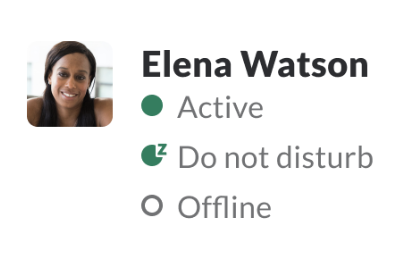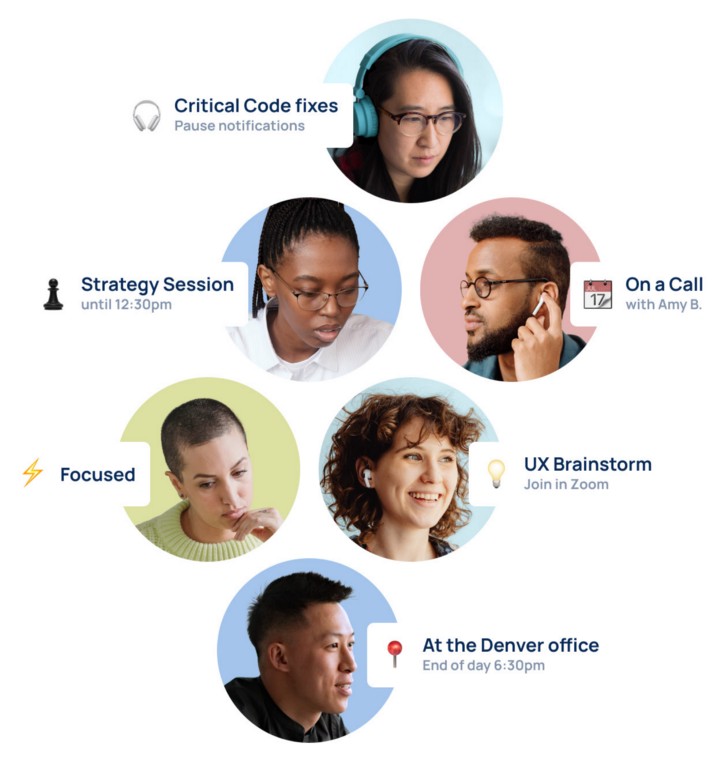Featured author: Raj Singh, CEO and Co-founder of SRI spin-out, Pulse — Automatic Status


With remote work and skyrocketing usage of digital workplace tools, status has become more critical than ever
From your phone’s auto-correct to your car’s autopilot on the freeway, practically every workflow in our lives has been upended with artificial intelligence (AI). Yet despite all of the advances, one component has not changed in over twenty years — the status indicator found in nearly every digital work communication tool. Unchanged since it first appeared, its anachronistic form remains identical to that of the days of ICQ and AOL Instant Messenger. Is online, idle, and away the best we can do?

With remote work and skyrocketing usage of digital workplace tools like Slack and Microsoft Teams, status has become more critical than ever. When workers need to know who is around and available, the green dot is their only reference.
The stagnant innovation of the status indicator is as much psychological as it is technical. Status is a means to communicate availability and express oneself, but it can also enable a toxic, always-on workplace culture. Notifications that come with today’s limited status exacerbate disruption and lead to burnout. Employees are reporting some of the lowest happiness scores in years and employee churn is through the roof, in what’s now being called the Great Resignation.
The green status dot has simply been unable to keep up with teams’ new and unprecedented working environment, posed by the COVID-19 pandemic and the rapid shift to hybrid work.
How can presence visibility be improved?
AI can play a critical role in evolving “status” into something for the new future of work. Pulse, an SRI International spin-off, is tackling this exact problem using AI, natural language processing, and semantic analysis.
Pulse analyzes hundreds of organizational and employee-enabled data sources. It then synthesizes this data in real time to generate statuses that best inform colleagues about their colleagues’ true availability.
These signals include workers’ time zones, calendar events, work hours, shared team apps, working location — and even determine whether the system thinks you’re focused on a task. Beyond work inputs, Pulse also analyzes user-shared interests such as sports teams and music that bring missed camaraderie to the team.
These signals can range from the number of steps on your smartwatch, including the music you’re listening to, the latest Netflix show you’re watching, local weather, or even mood indicators — all information that is simply unavailable in today’s digital workplace.
Pulse then looks at a variety of settings that the employee or company defines such as time zones, no-meeting days, and more, and then synthesizes all of this workplace and personalized data to produce the best possible status matching the users’ intent — with an end goal of ultimately displaying this in natural language.

To process these signals, Pulse is utilizing experiences from SRI International’s AI and digital assistant platform, CALO (Cognitive Assistant that Learns and Organizes), and SRI’s STAR Lab (Speech Technology and Research Laboratory).
A Pulse-determined status could be as simple as “Long day, has a flight in the morning” to “In deep focus, best to connect in the afternoon” to “Listening to Nirvana and has a meeting coming up in an hour.” No matter the scenario, Pulse will generate a status amongst thousands of permutations and will evolve to match your work style.
To define your work style, in Pulse settings, a user or team can configure clear boundaries around their communication preferences. Users can define work hours and rules around when notifications can be delivered; optimize their availability based on focus time and workload; create rules for sharing interests or other activities and much more.
Today, Pulse customers report a 65% increase in focus time, a 28% increase in employee happiness and an increased sense of team connectedness.
Keeping a Pulse on the future of work
The complexity of such a system is multi-fold. Hundreds of signals, many of which come from 3rd party connected data sources and others from the user’s own devices such as their desktop and mobile, must all be processed, synchronized and analyzed in real-time. Looking at user history, the Pulse system can determine patterns of work and behaviors to better anticipate the best status that leads to the goals defined by the user or organization. Such goals could include more workplace autonomy or more focus time with fewer interruptions or more casual communications with other team members and so forth.
Once Pulse constructs the status, it then transforms the text into something more friendly and readable to the average team member. The best status is the one you would have written and often it’s not about availability but rather things like personal expression or interests. As the system runs, interactions and notifications can be measured creating a feedback loop.
The metaverse and beyond
With Facebook renaming to Meta, they have made a multi-billion dollar bet on the metaverse. Its early promise of connected virtual and augmented reality experiences that are limited only by imagination. Through Facebook Horizon, workers connect and collaborate in virtual space as if they’re working side-by-side. When physically in an office, your presence is your status; whether you have headphones that can indicate you’re focused, talking to a colleague or even wearing your favorite sports team’s hat to show that you are a fan. When working in the metaverse, your presence, walk and attire can once again reflect your status.
Pulse has an opportunity to control your availability status in each metaverse space so that you only see those colleagues you want to appear available. Your virtual attire might even automatically update to reflect your current mood.
Whether your digital office or the metaverse, the role of presence and status is critical to the future of work and Pulse has an opportunity to own the entire layer.
The future of work is remote, where status and presence will be at the forefront in digital workplace communication tools. Today, Pulse connects different endpoints and builds the AI layer to understand user intent.


